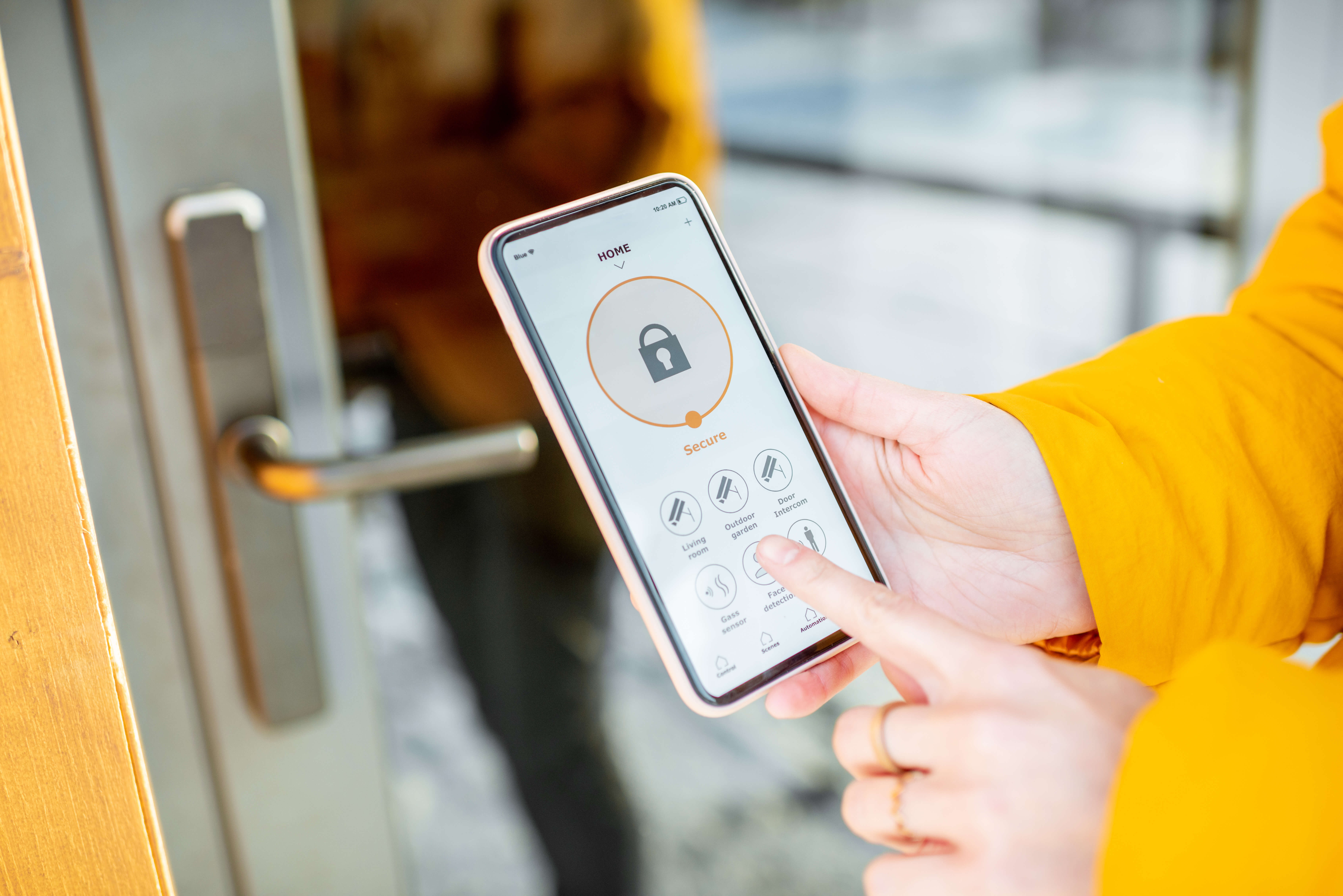Pointr – an indoor location services provider that specializes in mapping, positioning, and wayfinding – develops solutions that support some of the largest indoor mapping deployments. Using AI-based maps and scalable indoor location technology, Pointr interactive maps, intuitive wayfinding systems, and accurate blue dot positioning solutions have enhanced operational processes for retail, aviation, healthcare, hospitality, and workplaces around the globe.
I recently had an opportunity to speak with Jamie Cracknell, operations lead at Pointr, about recent and upcoming Bluetooth® Location Services trends.
Q&A With Jamie Cracknell From Pointr
What 2023 Bluetooth technology trends most stick out to you, and what impacts did these trends have on the market?
We’ve seen a lot of interest from retailers to solve product location challenges inside their stores. As one retailer recently put it, “Sometimes a customer buys a blue T-shirt online and wants to pick it up in-store. As a store manager, I don’t know where the T-shirt is, and we’ve got an hour or less to find it. The customer can see that the shirt is available via the web or app, but we don’t know where it is.”
As retailers continue to use physical retail stores as fulfillment centers for their online orders, store managers and employees need to know where their stock can be located at all times. Additionally, shoppers want the ability to search for products in store without friction.
Using Pointr maps and Bluetooth® enabled location technology, retailers and shoppers can locate any product in store. By incorporating aisle and bin information into the product points of interest (PoI) on the map and by using turn-by-turn navigation from Pointr, users can select a product to navigate to the right aisle and bin.
Additionally, we see a lot of potential in using electronic shelf labeling (ESL) to solve in-store product location. These labels not only drastically reduce the time spent by store associates on manual price updates (thanks to their e-ink technology that allows remote updates) but also can be used as Bluetooth beacons and, when integrated with Pointr technology, for precise wayfinding to specific products.
What new Bluetooth trends can we expect to see in 2024?
The landscape of Bluetooth® technology in 2024 appears promising with a focus on ultra-low energy, innovative applications such as photovoltaic beacons, and the exploration of concepts like power over distance and virtual Bluetooth Low Energy (LE).
Ultra-Low Energy: In 2024, we expect to see an increased focus on ultra-low energy, addressing the demand for extended battery life in Bluetooth beacons. This year, we have seen a rapid evolution in firmware and hardware, particularly in optimizing battery consumption. The quality of Bluetooth beacons is improving, with new materials and a more efficient use of Bluetooth protocols, showcasing collaborative efforts between the Bluetooth Special Interest Group (SIG) and manufacturers.
Photovoltaic Beacons: Photovoltaic beacons (PV) are beacons that are powered by artificial lights. They’re similar to solar panels, but they can be deployed in buildings with artificial, constant lighting, such as airports and retail stores. They need very little maintenance, as the battery doesn’t need to be replaced, and we expect to see more of those being deployed in 2024.
Power Over Distance: This year, we’ve seen greater interest in the development of battery-free Bluetooth LE beacons that are powered wirelessly. While these are not currently viable for location services, we’ll watch innovations in this field with great interest in 2024.
Virtual Bluetooth LE: This emerging technology refers to the concept that a single access point or device can simulate the behavior of multiple Bluetooth LE beacons. The idea is to create a virtual representation of beacon signals at predefined locations, allowing applications and systems to interpret these signals as if they were coming from physical beacons. However, it’s important to note that while the concept is intriguing, its practical implementation is still a work in progress.
FEATURED INNOVATION
Bluetooth Electronic Shelf Labels (ESL)
With the introduction of a wireless standard for the electronic shelf label (ESL) market, Bluetooth® technology is helping unlock the next chapter in in-store digital transformation to deliver better retail outcomes for both stores and shoppers.
What has been the biggest demand from your customers for 2023?
The demand for indoor location services and maps is increasing every year as more and more major companies look to enhance the experience of their users and workforce, as well as seek to unlock major operational opportunities. In the vast majority of our deployments, accounting for millions of square feet, Bluetooth® technology is central to our operations.
When deploying location services, our Fortune 100 customers want a solution that is:
-
- Accurate: Location data should be within one to three meters of a user’s actual position
- Fast: Users should see their blue-dot position within two seconds of opening the map
- Flexible: Maps should be easy to update with very little manual work required
- Robust: Location technology should be designed to last for years with little to no maintenance
- Hardware Agnostic: The performance of location services should be similar on iOS and Android devices
- Limitless Users: Location data should be consistent even during peak demand
- Battery Optimized: Software should be optimized to not drain the user’s phone battery
Bluetooth technology remains, in my opinion, the outstanding choice for indoor location-enabling hardware thanks to its ubiquity in modern devices, such as smartphones, its reliability, and its energy efficiency. When combined with Pointr’s patented technology, it provides cost-effective, accurate location data.
What has Pointr been focused on in 2023, and what will you focus on for 2024?
Venue operators want the ability to guide visitors and staff with interactive maps and turn-by-turn navigation, and they want to be able to do so without them having to download an app. At Pointr, we’re able to guide visitors around large venues without the need of an app. Visitors just scan a QR code, tap an NFC tag or receive a text message, and they can open a map and access blue-dot location instantly. With our Bluetooth® enabled technology:
-
- Retailers can map individual product locations, enabling users to add multiple items to a shopping list and then navigate between them. Watch demo.
- Hospitals have the ability to provide patients and staff with maps of large facilities, no app download is necessary. Insights from UCHealth’s patient journey transformation.
- Airports and airlines can use location services to guide travelers to their gate, to their flight connection, or to their ride. Boston Logan airport map, powered by Pointr.
- Finally, through our partnership with Okeenea, we are helping to improve the accessibility for a wide range of locations, including universities and transport hubs, by providing indoor turn-by-turn navigation in the Evelity app.
What will be the biggest difference for Bluetooth technology in 2023 vs 2024?
Fundamentally, I don’t see Bluetooth® technology’s core values of being a highly trusted and regularly used technology changing at all between 2023 and 2024. I believe the biggest difference will be the number of devices and technologies that leverage Bluetooth technology continuing to grow, and, with them, the number of potential use cases and solutions that rely upon expanding Bluetooth technology.
What are your predictions for Bluetooth technology over the next 25 years?
The rise of Bluetooth® technology over the past 25 years has led it to become one of the world’s most recognizable and widely used technologies. It is a testament to the brilliance of Bluetooth as a technology that it has been able to achieve so much in such a relatively short period of time.
As for the next 25 years, I can only see Bluetooth technology reaching new heights. It is so established in everyday devices, such as smartphones, and I believe it will continue to evolve, providing users with new use cases and continuing to push the boundaries of wireless connectivity. I’m particularly excited about the integration of Bluetooth technology into smart devices, smart buildings, and smart cities.
![]()
ON-DEMAND WEBINAR
The Myths & Facts about Bluetooth® Technology as a Positioning Radio
Watch this detailed discussion into the challenges and opportunities in front of indoor location services systems and how to tap into their potential in manufacturing, logistics, retail, offices, and more.

































